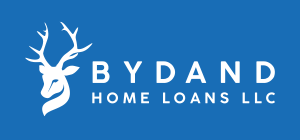
Time for an Upgrade?
Image by Pixabay
Have you been dreaming about that state-of-the-art kitchen remodel? Or gutting a grimy bathroom to make room for a relaxing spa-like retreat in your master suite? How about a new deck, pool, or other pet projects (like finishing a basement to make room for an exercise area – since gyms seem to be out of favor at the moment)?
With interest rates at all time lows, improving your home or getting cash for other large expenses may well be within reach. Depending on your equity, credit score, and current interest rate, you could potentially tap into the value in your home at little to no extra monthly cost.
There are a few ways of getting access to your equity. Here are two options to consider:
Cash-Out Refinance
In the case of a cash-out refinance, you work with a mortgage company to pay off your current mortgage and receive an entirely new mortgage that is higher than the payoff amount. The additional cash would be yours to use as you see fit, tax-free. Compared to a traditional rate-and-term refinance, the cash-out refinance may have a higher interest rate.
In the past, the higher mortgage amount and rate could cost you more in monthly payments. But with current interest rates being so low, there is a good chance (depending on your credit score and current interest rate) that your new rate could still be lower than your current mortgage rate. A cash-out refinance could make sense if you end up with the same monthly payment or lower, but you have an additional, say, $20,000 in cash at closing.
You could use the money to pay off higher-interest debts, which would be prudent. Or for another large purchase like a motorcycle (which would probably not be prudent). It may be best, though, to use the cash to make home improvements; then you'd be using the equity in your home to increase the equity in your home. That's the type of expense that pays you back.
Home Equity Loan
Home equity loans are different from a cash-out refinance because although they use the home value to secure the loan, they do not change the current mortgage. With a home equity loan, the homeowner must now pay back both the home equity loan and the existing mortgage. The home equity loan will provide homeowners with cash to use for multiple purposes, but if it is used for home improvements, the interest paid could be tax-deductible.
A benefit of the home equity loan is that closing costs (if any) would be lower than with a full refinance. The closing process may also be faster, and the lender is not likely to require mortgage insurance either. However, the interest rates (and monthly payments) may be a bit higher than a refinance because it has a higher risk – in the event of default, the primary mortgage lender gets paid before the home equity lender. But if you're not planning on staying in your home for the long term, the lower closing costs could represent a savings over a full refinance. Just be aware of any prepayment penalties – you may need to wait 2 or 3 years before you can sell the home and pay off the home equity loan.
If your current mortgage is already a good rate, the home equity loan could be an appropriate way to take advantage of the current market conditions while creating even more equity in your home through a remodel. If you improve the value of the home by more than the interest you'd pay on the loan, then you will have made a good investment. Plus you've made your home more livable!
If you've ever considered getting a loan for a home improvement project, this is a good time to start doing your research and considering your options. You may not ever get better rates than you can now. Feel free to give us a call [ link to phone number] if you'd like more information about what might work best for you. At Bydand, it is our mission to provide steadfast solutions tailored to accomplish our clients' home financing goals.

